Roy Miller's Blog, page 306
January 6, 2017
An Easier, More Meaningful Approach to Your Writing Resolutions
I’ve never been big on New Year’s Resolutions—not because I don’t believe in trying to make a change or to work toward a goal, but simply because I don’t believe in waiting to flip a calendar page to do it. I’m just as likely to reboot my writing routine in the middle of August (and often do), so that when January comes along I don’t usually hear alarm bells that it’s time to shake things up.
There’s no denying that a fresh start is a time for reflection, though—on the year we’re leaving behind as well as on what might lie ahead. It was during such a reflection period a few years back that I decided maybe I did want to make one particular resolution after all. In fact, I’ve made the same one ever year since.
The approach is simple and open-ended—and regardless of whether you’re into Jan. 1 goal-setting, it might just be the benchmark you need, too.
A Year of Rejection
My thinking on this changed in 2014—not an easy year for my writing. It started, ironically, on a great note: I signed with an agent and had a novel go out on submission right around the time I gave birth to my daughter in mid-January. Then, Ohio was plunged into a deep freeze meteorologists dubbed “The Polar Vortex,” and while I was snowed in on maternity leave with my 2-year-old climbing the walls around me and my newborn, occasionally my phone would ping with news of the outside world: Specifically, a rejection.
A steady stream of these continued for a few sleep-deprived months, until there were no yesses left to wait for, at which point my agent and I had a strategy phone call in which we agreed I should revise once more before submitting further.
Never mind that this call occurred just as I returned full-time to Writer’s Digest, choked back tears in the daycare parking lot, put our outgrown house on the market, sold it within days, and scrambled to find a new home. Between bank inspections and stacks of cardboard boxes and 3 a.m. feedings, I revised to the limits of my sanity (and my husband’s). Just in time for the move, I shuttled it off for a fresh round of submissions.
While unpacking and settling into life in our new neighborhood, occasionally my phone would ping with news of the outside world: Specifically, more rejection.
Correspondence from my agent grew spotty. I started writing something new, to take my mind off of the submission/revision/rejection cycle. My new house had something I’d never had before: a room just for my writing. The small satisfaction of filling that space fueled me even as the radio silence on my submissions grew louder.
Still, come Thanksgiving, my relatives were asking about my novel with sympathy in their eyes. I couldn’t hide my disappointment. I’d started the year with high hopes, I’d done all that was asked of me even when it was hard, but I’d failed.
And then, I wrote an essay. And I sold it. To the Sunday Style section of The New York Times.
The Power of One Good Thing
My essay, “An Extra Angel on Top of the Tree,” was holiday themed and thus ran in mid-December. It was also deeply personal, and I can’t say I didn’t have reservations about publishing it—but the warmth of the response thawed my doubts. I closed out the final weeks of the year with my phone pinging with news of the outside world: Specifically, encouragement, gratitude and support.
While my 100,000-word tome had been getting me down for months, it turned out all I needed was an unrelated 1,000 words to get my spirit back on track. In part because it was the end of the year, that’s when I realized the power, in this writing life of long stretches of solitude punctuated by small victories, of doing one thing you’re truly proud of.
That’s not a bad goal , I thought. Not too intimidating, in those non-specific yet still important terms. I should aim for that again.
And I did. Though not directly. The first nine months of 2015, in fact, brought another slog through rejection. Then, my agent and I parted ways. But by the end of the year, I had a new one—thanks to the new manuscript I’d completed and revised. By the time I signed my two-book deal with St. Martin’s Press in December (in case you missed it: a story I shared in the post How I Got My Agent—and Book Deal: Writer’s Digest Editor Edition), my head was spinning with how fast things had turned around—and the realization that I’d managed something else I could feel thoroughly good about.
So now I stand in the wake of 2016—my busiest year ever as I worked alongside my publishing team to get that novel ready for its publication (Almost Missed You is coming March 28, 2017!). But when the ball dropped on Dec. 31, what brought me the greatest sense of achievement was having written another novel, my first under contract, and turned it in before the holidays, two months ahead of schedule.
I haven’t gotten feedback from my editor yet, but (while I really, really hope she likes it!) that doesn’t preclude me from counting that big finish as my One Thing. Because among the benefits of setting a goal to simply do one thing every year that you’re truly proud of with your writing are these:
It’s not necessarily external. It doesn’t have to be (and probably shouldn’t be) contingent on someone else saying yes.
This approach is about perseverance.
You can (and should) work toward this goal while resisting the urge to force or pressure things.
You might just surprise yourself!
The Only Resolution You Need
None of those years did I set out knowing what my One Thing might be, but this is clearer than ever to me now:
That One Thing a year, if you can manage it, really is all it takes to keep yourself going—even at full throttle.
Yours could be a big byline, or it could be a quiet blog post. It could be a new friendship with a writer you once found intimidating, or it could be typing “The End” on Page 300. It could be courage, or, yes, it could be a contract. Ultimately, it needs only to be meaningful enough to stand apart in your mind, to fill your tank, to rev your engine.
Whatever your One Thing turns out to be, you’ll know it when you see it—or, rather, when you feel it.
Every day is a new chance to get there. And the real beauty of a new year is that it holds 365 of them.
Yours in writing,
Jessica Strawser
Editorial Director, Writer’s Digest magazine
Subscribe today. Your writing will thank you.
Follow me on Twitter.
Connect with me on Facebook.
Learn more about ALMOST MISSED YOU , now available to add to your Goodreads shelf or preorder from Amazon, Barnes & Noble or your favorite online book retailer !
You might also like:
The post An Easier, More Meaningful Approach to Your Writing Resolutions appeared first on Art of Conversation.
11 Classics of the New Gothic Canon
I was a child who ached to see ghosts. I imagined the bedroom furniture had been rearranged by invisible hands, that the woods behind my house recorded the tread of wandering dead people. Because I was basically safe and well-loved, it was a form of ecstasy to be scared. I wanted very badly for there to be wrinkles in the known world—a rush of magic, of mystery—so I read a good dose of R.L. Stine, V.C. Andrews, and Stephen King.
Though I learned to love reading by reading these books, I later forgot almost entirely about them. By the time I was in high school, I’d grown self-conscious about the columns of mass-market paperbacks stacked in my basement room. Plus, I’d fallen for the music of the sentence. Virginia Woolf and Toni Morrison seemed to occupy not just a different genre from Stephen King, but a different medium altogether, a different universe. Still, all those years spent curled up in a damp basement with mystery and horror novels had left their mark, and when I began drafting my own stories as a young writer, I found the tug of secrets, or of the unspoken past, preoccupied me.
The mystery, the detective, and the horror novel all find a common root in the Gothic fiction of the 18th century. This became clear to me not long before I started writing my first novel, when I found myself reading for school Horace Walpole’s stagey, surreal The Castle of Otranto and Ann Radcliffe’s gloomily overwrought The Mysteries of Udolpho. The shared ingredients of early Gothic fiction were clunky: the virginal maiden, the perverse tyrant, the crumbling castle. Gothic fiction was seen as pretty trashy even in Radcliffe’s time, light reading for sentimental girls, and yet these novels deeply influenced so many writers to come, including Henry James and Edgar Allan Poe, and in turn, Stephen King and Shirley Jackson. What was, and remains, so potent about Gothic fiction is the way it cultivates the readerly ecstasy of standing outside oneself by being afraid. Such dislocation is not only pleasurable, but also unsettling in ways that can be both psychologically and socially illuminating. (It’s no accident that the protagonists of these books are frequently female, and outsiders.) What Gothic fiction gets right is the unspoken as a powerful engine of storytelling.
There is no crumbling castle in my first novel History of Wolves. The virginal maiden is a scrawny outcast living off the land in the northern Minnesota woods. The villain or villains are ordinary middle-class people doing what they think is best for the people they love. The secrets of the book are supernatural only in the sense that death itself, especially of a very young person, feels so unnatural as it unfolds. But the extent to which the novel cultivates in readers a feeling of being haunted by what goes unsaid—along with the awful thrill of secrets surfacing—is the extent to which History of Wolves owes a debt to the Gothic elements that so deeply infused my early reading obsessions. Here, then, are eleven (mostly contemporary) Gothic tales that unsettle and illuminate in the best ways.
Article continues after advertisement
Jane Eyre, Charlotte Brontë
For me, Jane Eyre will always be the quintessential Gothic novel. We follow plain, poor, orphaned Jane to her scut job as a governess in a big English house—the kind of rambling place that keeps its secrets imprisoned, quite literally, within its attic walls. What feels so fresh and contemporary about the book is the tenderly flirtatious rapport established between Jane and her employer, Rochester, and in particular the sparkling ferocity that Jane maintains in the face of Rochester’s heated appeals. Virginia Woolf famously slammed Charlotte Brontë for wearing her heart too much on her sleeve in Jane Eyre, but to me it is precisely the unabashed politics of yearning in this book that makes it so propulsive even now.
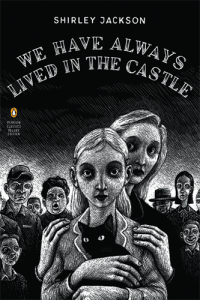
We Have Always Lived in the Castle, Shirley Jackson
This is Shirley Jackson’s last and most exultant novel. It is told in the vividly unreliable voice of “Merricat,” the younger sister of Constance Blackwood—who may or may not have murdered most of the rest of their family. The two sisters and one surviving uncle live in isolation in the old family house, growing much of their own food and keeping mostly to themselves. Their Gothic idyll is punctured when a greedy cousin arrives from out of town, but his effect is only to force the two sisters inward even more. The house becomes their castle; the sisters choose to lock themselves inside. The brilliance of this book comes in its hair-raising and wholehearted celebration of the rejection of all human society. It is a revolutionary refusal, one in every sense of the word: to accommodate, to explain, to respond.

The Diving Pool, Yoko Ogawa (tr. Stephen Snyder)
Yoko Ogawa’s three perfect novellas in The Diving Pool have the lulling, disturbing effect of ghost stories without ghosts: there is always something just out of sight, something held off the page in deference of ambiguity. This is a universe made out of the unspoken and the unspeakable. A teenage girl becomes obsessed with her foster brother, a diver; a woman compulsively records the details of her sister’s pregnancy in a diary; another woman returns to her college boarding house, now run by a man with no arms and only one leg. Without being flashy, Ogawa’s language—even in translation from the Japanese—is so precise that every sentence seems to convey both its own meaning and also the black matter of all that can’t be measured in words.

The Dark Half, Stephen King
I read and loved other books by King, especially The Shining and The Stand, but it was The Dark Half that most fully captured my imagination when I was young. The plot follows a well-regarded writer whose horror-writing pseudonym, after being put to rest, apparently takes on a vengeful afterlife of his own. I remember reading The Dark Half in bed at night, unable to move to turn the page or switch off the light, for fear that the book’s dark horrors would somehow detect the movement and heat of its reader. This is what makes the book so delightfully chilling: it transforms reading itself into a haunted act. The Dark Half works its magic as a perversely meta book, a novel about the horror of writing and reading novels.

Runaway, Alice Munro
Alice Munro has long been associated with Southern Ontario Gothic. On the surface, her marvelous short stories derive their tensions from conventional small town life. And yet just beneath the surface of Munro’s steady prose (and the humble dialogue of her characters) is the churning energy of what can’t or won’t be said out loud, and this can make her fictional world feel otherworldly, haunted around the edges. Runaway’s titular story is Gothic in structure: a wife plans to escape from her aggressive and controlling husband. At the crisis of the story is a runaway goat, “whose appearance out of the fog seemed…more and more magical.” It is Munro’s reworking of ordinary moments like this into unlikely occasions for the sublime that makes her work so extraordinary.
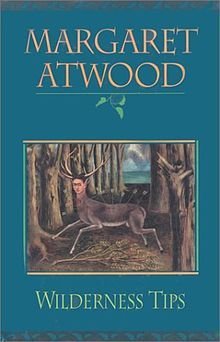
Wilderness Tips, Margaret Atwood
Another Southern Ontario Gothic writer, Margaret Atwood has experimented with the Gothic form in novels like Alias Grace and The Blind Assassin. But for Gothic dread I like her stories even better: Wilderness Tips expertly evokes the fear of past mistakes and of emotionally charged places. “Death by Landscape” is a near-perfect example of the way a Gothic setting often takes on so much psychological charge that it seems to act on the characters as a villain itself.

The Violent Bear It Away, Flannery O’Connor
The Violent Bear It Away is Flannery O’Connor’s second and last novel. It follows a young boy attempting to escape the prophesy that he himself will become a prophet. Here, as in so much of her writing, O’Connor is dead serious even as her prose offers a curiously light touch, her distinctive combination of whimsy, wit, and despair. The Violent Bear It Away is a classic example of the Southern Gothic, yes, but what makes O’Connor so uniquely O’Connor in this book is the flickering heat of her language, her sentences somehow converting murder into baptism. O’Connor’s genius is in the way she reassembles the old Gothic materials—ruins, violence, death—to jolt us into transcendence.

In the Lake of the Woods, Tim O’Brien
This dazzlingly disquieting novel is set in my home state of Minnesota. O’Brien’s protagonist John Wade is vacationing in the remote Northwest Angle after a failed senate campaign when he wakes up one morning to find his wife missing. Deliciously, infuriatingly, O’Brien offers several competing explanations for Kathy Wade’s disappearance. He effectively uses the narrative engine of her vanishing—a secret kept even from the reader—to overfill the gaps, to advance a postmodern uncertainty about the stories we tell ourselves and others.

Beloved, Toni Morrison
Inside my paperback copy of Beloved is the inscription: “To Emily on her 15th birthday. Love Dad.” Beloved was the Rubicon in my reading life. After I read Morrison’s sentences I couldn’t go back: all English sounded different to my ear after that day. It was only many years and many books after my 15th birthday that I realized the obvious: the novel that taught me to love sentences was, like so much of my earlier reading, a ghost story, too. Set in an African American community in Ohio in the aftermath of the Civil War, Beloved traces the crooked folds of history and the profoundly human hauntings that occur when a past cannot be—and should not be—forgotten. I would argue that there is no more important ghost story in the English language.
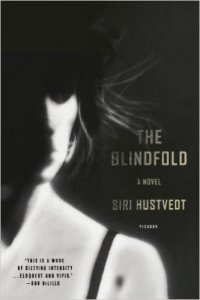
The Blindfold, Siri Hustvedt
Siri Hustvedt’s first novel is an assured, intricate, baffling puzzle. Four short narratives follow Iris Vegan, a graduate student from Minnesota, as she negotiates her impoverished life in New York City. Rural Gothic ruins are replaced here with urban Gothic streets, and in the first sections of the book, Iris finds herself subject to the obsessions of peculiar and faintly menacing men. In unadorned prose, Hustvedt offers a resonant meditation on intimacy, sexuality, art, and identity. In the final section, the grad student “maiden” ventures out into the city dressed as a man herself, and the novel’s eerily meditative stance reveals itself as subtle-yet-fierce feminist defiance.
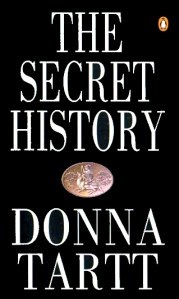
The Secret History, Donna Tartt
Tarrt’s first novel moves at a decadently slow pace. We learn at the very beginning that a murder has occurred, and so the book has been called a murder mystery in reverse, but what I love is the sheer bigness of this book, the meticulous and unhurried world-building. Tartt lets us luxuriate in her bucolic New England college setting. She lets us spend a lot of time with a group of unusual and tightly-knit students in an elite Classics program—as they grapple with both lofty and petty ideas about aesthetics—before we learn at long last how and why “Bunny” Corcoran died.
The post 11 Classics of the New Gothic Canon appeared first on Art of Conversation.
January 5, 2017
Why Bookstores Matter
For my forthcoming book, Footnotes from the World’s Greatest Bookstores (Clarkson Potter, Oct.), I spent two years lovingly illustrating shops across the globe, working from a list based on recommendations, research, and personal experience. During this time I also collected stories about each store from owners, employees, customers, and my favorite people—a list comprising today’s greatest artists and thinkers. Some inspired me growing up, and some, like David Bowie and Robin Williams, recently left us.
In the end, I had 150 shops and more than 300 stories to choose from: tales of romance, stories of scandal, hilarious anecdotes—too much to fit in my book. Cutting the list in half to 75 bookstores was heartbreaking and difficult, so here I share a couple of great bookstores that wound up on the cutting-room floor, along with one that made it in.
Bob Eckstein is a writer and New Yorker cartoonist. His newest book, Footnotes from the World’s Greatest Bookstores, will be published by Clarkson Potter in October.
A version of this article appeared in the 09/26/2016 issue of Publishers Weekly under the headline: Shelf Lives
The post Why Bookstores Matter appeared first on Art of Conversation.
Career Chops: Do I really need an editor?
You sure do, as do best-selling authors, heads of state and your mom when she sends out her annual holiday email. “Everyone needs an editor” is such a truism that no one knows who said it first.
Perhaps you’ve heard a writer on some online forum or in your writer’s group say, “An author should tell his or her own story,” but that’s missing the point of what an editor does. Editors are like midwives: They don’t make the baby; they help deliver it.
If you’re in an early draft, an editor may work with you on structure: Is the protagonist’s need compelling? Does the pace lag? Does your character evolve emotionally?
By the time you’ve rewritten your novel three times, you’re so familiar with the material you can’t separate what’s on the page from what’s in your head. An editor can identify holes in your plot and extraneous backstory your reader doesn’t need.
Finally, an editor can turn your story from a raw gem into a gleaming jewel: eliminating filter words, finding passive sentences, striking out all semi-colons and pointing out those six paragraphs in a row that start with “I.”
A strong, critical eye is essential to a developing story. Whether your editor is a classmate in your graduate seminar, your journalist spouse, a hired professional or a neighbor who works for a publishing house and is happy to trade for babysitting, make no bones about it: Everyone needs an editor.
—Dionne McCulloch, U.S. managing editor, Cornerstones Literary Consultancy. Web: cornerstonesUS.com.
The post Career Chops: Do I really need an editor? appeared first on Art of Conversation.
Lerner Publishing Hires Andy Cummings as Editor-in-Chief
Lerner Publishing Group announced on Wednesday that the venerable 57-year-old Minneapolis-based children’s book publisher has hired Andy Cummings as v-p and editor-in-chief of its 14 fiction and nonfiction imprints and divisions, which target both the school/library and trade markets with approximately 400 releases each year.
Cummings will lead LPG's content team of 50 people, which includes its editorial, photo research, and integrated creative services departments. Cummings, who is relocating from Indianapolis to Minneapolis, will assume his responsibilities at LPG on January 20 and will report to Adam Lerner, LPG publisher and CEO. He replaces Patricia Stockland, who served as LPG's editor-in-chief from 2013-2016.
Cummings previously worked for more than 20 years at Wiley where, most recently, he served for five years as v-p of strategic business development for the Dummies brand of reference guides with the iconic yellow covers. He earlier served as publisher and publishing director of Wiley’s Dummies Technology series for 15 years.
“With his extensive management, workflow, and content development expertise, Andy brings to us a proven track record in educational products,” Lerner stated in a release. “With his wealth of experience and leadership skills, Andy will excel in his new role, and as our publishing program continues to grow he will be focused on building a list of quality titles that exceed the expectations of children, educators, and librarians.”
The post Lerner Publishing Hires Andy Cummings as Editor-in-Chief appeared first on Art of Conversation.
Rattle Chapbook Prize: Poetry Spotlight
New year, new ideas. So I’m going to try a new series on Thursdays that I’m calling Poetry Spotlight. Sometimes, I’ll spotlight a market; other times, I may spotlight a poetry venue, event, or some other happening. If you have ideas, share them in the comments below or send me an e-mail at robert.brewer@fwmedia.com with the subject line: Poetry Spotlight Idea.
*****
The 2017 Poet’s Market, edited by Robert Lee Brewer, includes hundreds of poetry markets, including listings for poetry publications, publishers, contests, and more! With names, contact information, and submission tips, poets can find the right markets for their poetry and achieve more publication success than ever before.
In addition to the listings, there are articles on the craft, business, and promotion of poetry–so that poets can learn the ins and outs of writing poetry and seeking publication. Plus, it includes a one-year subscription to the poetry-related information on WritersMarket.com. All in all, it’s the best resource for poets looking to secure publication.
*****

Rattle 47
For the first poetry spotlight, I want to share the Rattle Chapbook Prize, which is one of many great poetry-related offerings from the Rattle team. There are a lot of poetry chapbook contests and competitions out there, but there are a few things that set this competition apart.
First, the prize money: $2,000 is a pretty hefty sum for a chapbook contest. Second, the winning poet receives 500 copies of their chapbook to sell at events, through their website, give to friends and family, etc. Third (and maybe most importantly), the winning chapbook is distributed to Rattle’s 7,000+ subscribers. Wow!
As the editors say on their site, “In a world where a bestselling full-length poetry book means 1,000 copies sold, the winner will reach an audience seven times as large on the first day alone—an audience that includes hundreds of other literary magazines, presses, and well-known poets. This will be a chapbook to launch a career.”
Manuscripts should be 15-30 pages of poetry, but act fast. The deadline is January 15, 2017.
*****
Robert Lee Brewer is the editor of Poet’s Market and author of Solving the World’s Problems. Follow him on Twitter @robertleebrewer.
*****
Check out these other poetic posts:
You might also like:
The post Rattle Chapbook Prize: Poetry Spotlight appeared first on Art of Conversation.
LitHub Daily: January 5, 2017
The Best of the Literary Internet, Every Day
More Story
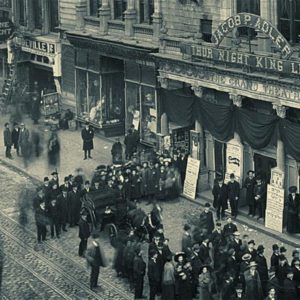
There Have Always Been Genre Wars
The following essay originally appeared in the 2017 issue of Paper Brigade, the Jewish Book Council's annual literary magazine.
Man...
The post LitHub Daily: January 5, 2017 appeared first on Art of Conversation.
Finding Safe Haven, 77 Years Later
I was a 10-year-old boy living in Havana when I first heard about the St. Louis, a luxury ocean liner that set sail from Hamburg, Germany, on May 13, 1939, with more than 900 Jewish refugees on board who were fleeing Nazi Germany for Cuba.
For many of the passengers, Cuba offered a beacon of hope, a place of transit on their way to another destination. Most were waiting for the U.S. and Canada to start issuing visas again; even once they did, the wait could last months or years. However, when the ship arrived in the port of Havana on May 27, its passengers were denied permission to disembark, despite having the appropriate visas.
The St. Louis remained stranded in the harbor for a week. Cuban President Federico Laredo Brú ordered it to leave, allowing only 28 of its passengers to enter Cuba. The ship then headed for the United States, only to be turned away by President Franklin D. Roosevelt, and then turned away again from Canada by Prime Minister William Lyon Mackenzie King. As a result, the remaining Jewish refugees were forced to return to Europe. Some were admitted to the United Kingdom; others went to France, Holland, and Belgium, but with the exception of the U.K., these countries were soon occupied by the Nazis, so the refugees didn’t get much in the way of asylum. A large number of them did not survive the war.
Several of those 28 passengers who had been allowed to enter Cuba made a lasting impression on my grandmother. The daughter of Spanish immigrants, she had been pregnant with my mother when the St. Louis arrived in Havana. Decades later, during my childhood, I remember her repeating that Cuba would pay dearly for what it had done to the Jewish refugees.
When I wrote The German Girl, a fictional retelling of this tragic part of history, I wanted to explore these harrowing events and their repercussions. The story of my protagonist, Hannah Rosenthal, is one of profound loss and upheaval, but it also reveals the far-reaching power of love. It touches on certain recurring fears: the fear of those considered “other,” of refugees, of those who worship a different God or speak a different language.
Such fears have played a part in my life ever since I left my home in Havana for New York in 1991 in search of freedom of expression. Overnight, I went from being a theater critic to being an exile, a refugee. I gave up my home and family to arrive at a great unknown. However, my sense of loss, displacement, and exclusion soon gave way as I was allowed to assimilate and flourish in this new country. I can truly call the United States my own, a place where I eventually created a new home and a new family.
Yet I remained haunted by the story of those refugees who had arrived in Havana so long ago. As I began writing The German Girl, I couldn’t stop thinking of my own children: Emma, 10, and twins Anna and Lucas, six. They inspired me throughout, at times lending their voices to some of my characters, such as young Hannah and Anna, Hannah’s great niece, just as some traces of my grandmother’s essence can be glimpsed in Hannah’s mother, Alma, and in Hannah herself, as she becomes an old woman in Havana.
As part of my research, I flew to Germany and explored the area of Berlin where Hannah would have lived, trying to imagine her city filled with broken glass and ogres waving flags. I traveled to Hamburg on the 75th anniversary of the sailing of the St. Louis. Afterward, I journeyed to Auschwitz, where I filed through a pristine garden before entering the cold desolate barracks and the gas chambers.
And later, I was able to visit Judith, a survivor whose name I got from the Holocaust Memorial Museum in Washington, D.C., the real German girl, in her small apartment in the Kew Gardens neighborhood of Queens, N.Y., where we spoke as if time had stood still. Our eyes brimmed with tears when she showed me a picture of herself, arm in arm with her parents, on the deck of the St. Louis. That afternoon in Queens, I embraced this frail woman at the end of my visit and whispered in her ear that I was ashamed at what had happened.
As a journalist, my visa for reentry to Cuba had always been denied, but this year, a quarter of a century after leaving Cuba, I was finally able to return. Standing before Havana’s legendary bay, I looked out toward the spot where the St. Louis had remained at anchor while its passengers hoped to gain entry. As I gazed at the city of Havana, which had proved out of reach for most of them, I couldn’t help but imagine other refugees, in times both distant and present, forced to confront a similar tragic fate.
Armando Lucas Correa is the editor-in-chief of People en Español. His debut novel, The German Girl, is due out from Atria in October.
A version of this article appeared in the 10/03/2016 issue of Publishers Weekly under the headline: No Safe Haven
The post Finding Safe Haven, 77 Years Later appeared first on Art of Conversation.
Cookbooks Preview: February 2017
Ease your way into 2017 with a reissue of a long lost soul food cookbook, and a starred collection of weeknight pasta recipes.
Source link
The post Cookbooks Preview: February 2017 appeared first on Art of Conversation.
7 Ways to Make a Young Reader’s Hair Stand Up
Children often want to get the thrill of suspense from their novels. It doesn’t have to be the knuckle-biting fear of a haunted house or the threat of nuclear annihilation. It can be the fear that Susie will not get to the birthday party, Jason will never find his horse or Michelle won’t make the soccer team. Whatever the fear, writers need to create tension and pace in their work so that readers share their apprehension.
There are some techniques writers use to create that tension. Writers:
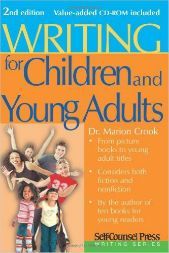 This guest post is by Marion Crook. Crook wrote a series of four YA mysteries and three MG mystery-adventure books. As well, James Lorimer Ltd. published her two sports stories for the YA market. Alternately with fiction, she wrote nonfiction and researched with teens and wrote books on suicide prevention, eating disorders and adoption. After more than twenty published books, she put together what she learned about writing and produced Writing for Children and Young Adults for Self-Counsel Press. After a PhD in education, she taught at university then retired to writing adult mysteries and non-fiction. She is agented by Creative Media, New York. Connect with Crook at marioncrookauthor.com and on Twitter @author_mcrook.
This guest post is by Marion Crook. Crook wrote a series of four YA mysteries and three MG mystery-adventure books. As well, James Lorimer Ltd. published her two sports stories for the YA market. Alternately with fiction, she wrote nonfiction and researched with teens and wrote books on suicide prevention, eating disorders and adoption. After more than twenty published books, she put together what she learned about writing and produced Writing for Children and Young Adults for Self-Counsel Press. After a PhD in education, she taught at university then retired to writing adult mysteries and non-fiction. She is agented by Creative Media, New York. Connect with Crook at marioncrookauthor.com and on Twitter @author_mcrook.
1. Create suspenseful plots
All stories need a plot that in itself creates tension. Whether you write a 16 page picture book for four-year-olds or a 14 chapter book for middle grade readers, make sure your book for children has conflict in the plot. What question is the plot answering? Will Judy get to school without stepping in a mud puddle? Will Sasha evade the forces of evil and fly triumphantly to her home? There will be one central question that drives the plot. The obstacles you place in the way of answering that question or preventing the protagonist from achieving his or her goals create the tension.
2. Choose words that increase tension.
Your choice of words can reflect increasing tension in the story. You can write: Mary did not want to go to school. There is little tension in that sentence. You can also write: Mary’s heart beat fast as she neared the schoolyard. The first sentence brings up a mild: I wonder why she doesn’t want to go to school. The second makes her fear obvious and the reader’s question more imperative: What’s going on at school?
[Here Are 7 Reasons Writing a Novel Makes You a Badass]
3. Set up conflict
Conflict occurs not only in the plot and in the choice of words but in the opposing needs and wants of the characters. Each character has a goal and thwarting that goal gives rise to conflict and therefore to tension. The more directly opposite the goals of the protagonist and the antagonist, the greater the conflict and the greater the tension.
You can set up conflict between secondary characters, even friends. If you write your story in scenes, you can consider some kind of conflict in each scene, even if it is slight such as moving a recalcitrant dog off a couch. You can create conflict with inanimate objects, like cars that won’t start, pens that break, and computers that fail to compute. Conflict creates interest and should move the plot forward.
4. Create doubt about a successful outcome
If your protagonist is so competent and self-reliant that success is probable there will be little tension. The reader must be in doubt that success is possible. The more personal, important and seemingly impossible to accomplish the goal, the greater the tension. Don’t make life too easy for the protagonist.
 Upcoming Webinars for Writers:
Upcoming Webinars for Writers:5. Use setting to heighten emotion
Writers of children’s stories use settings to heighten emotion, calm a mood, imply danger or lull the reader into a relaxed pace. The use of storms, dark, wind, crashing waves, sirens, vacant buildings, and haunted houses can increase tension. Calm lakes, sunny meadows and sandy beaches can be calming and relaxing settings but the addition of a snake in the meadow and a rising tide on the beach can change the setting from serene to scary in one sentence. You may want to do that.
6. Draft sentences to augment tension
Generally, the greater the tension, the shorter the sentences. This is particularly effective if your style of writing uses longer sentences and you begin to shorten them as the pace increases. To check your pacing, read your story aloud. You will, no doubt, increase your speed of reading when the tension increases and slow it when you want a relaxed section. Pay attention to the length of your sentences in those sections where you increase your speed. Pare out any extraneous words.
7. Report emotional responses
The protagonist can contribute to rising tension in the story by registering emotional responses to the action. She can tell us she is concerned, afraid, worried or terrified. We can appreciate the action from her point of view and enter into her emotional responses.
Creating a story that allows the reader to get excited, even apprehensive about the outcome for the protagonist involves many writing skills. First, you must have a protagonist the readers care about and then you must make the story exciting. The suggestion above can help move the story from mundane to marvelous. If you have a story you have written, take one or two paragraphs and critique them using the criteria set out here. See if you can make a difference in those paragraphs so you have a more dramatic story that impels the reader to read on.
Check Out These Great Upcoming Writers’ Conferences:
Feb. 16–19, 2017: San Francisco Writers Conference (San Francisco, CA)
Feb. 25, 2017: Atlanta Writing Workshop (Atlanta, GA)
Feb. 26–March 3, 2017: Writers Winter Escape Cruise (conference/cruise departing Miami)
March 25, 2017: Michigan Writers Conference (Detroit, MI)
April 8, 2017: Philadelphia Writing Workshop (Philadelphia, PA)
April 22, 2017: The Kentucky Writing Workshop (Louisville)
May 6, 2017: Seattle Writers Conference (Seattle, WA)
May 20, 2017: San Diego Get Published Conference (San Diego)
July 8, 2017: Cleveland Writing Conference (Cleveland)
Aug. 18–20, 2017: Writer’s Digest Conference (New York, NY)
Thanks for visiting The Writer’s Dig blog. For more great writing advice, click here.

Brian A. Klems is the editor of this blog, online editor of Writer’s Digest and author of the popular gift book Oh Boy, You’re Having a Girl: A Dad’s Survival Guide to Raising Daughters.
Follow Brian on Twitter: @BrianKlems
Sign up for Brian’s free Writer’s Digest eNewsletter: WD Newsletter
Listen to Brian on: The Writer’s Market Podcast
You might also like:
The post 7 Ways to Make a Young Reader’s Hair Stand Up appeared first on Art of Conversation.



